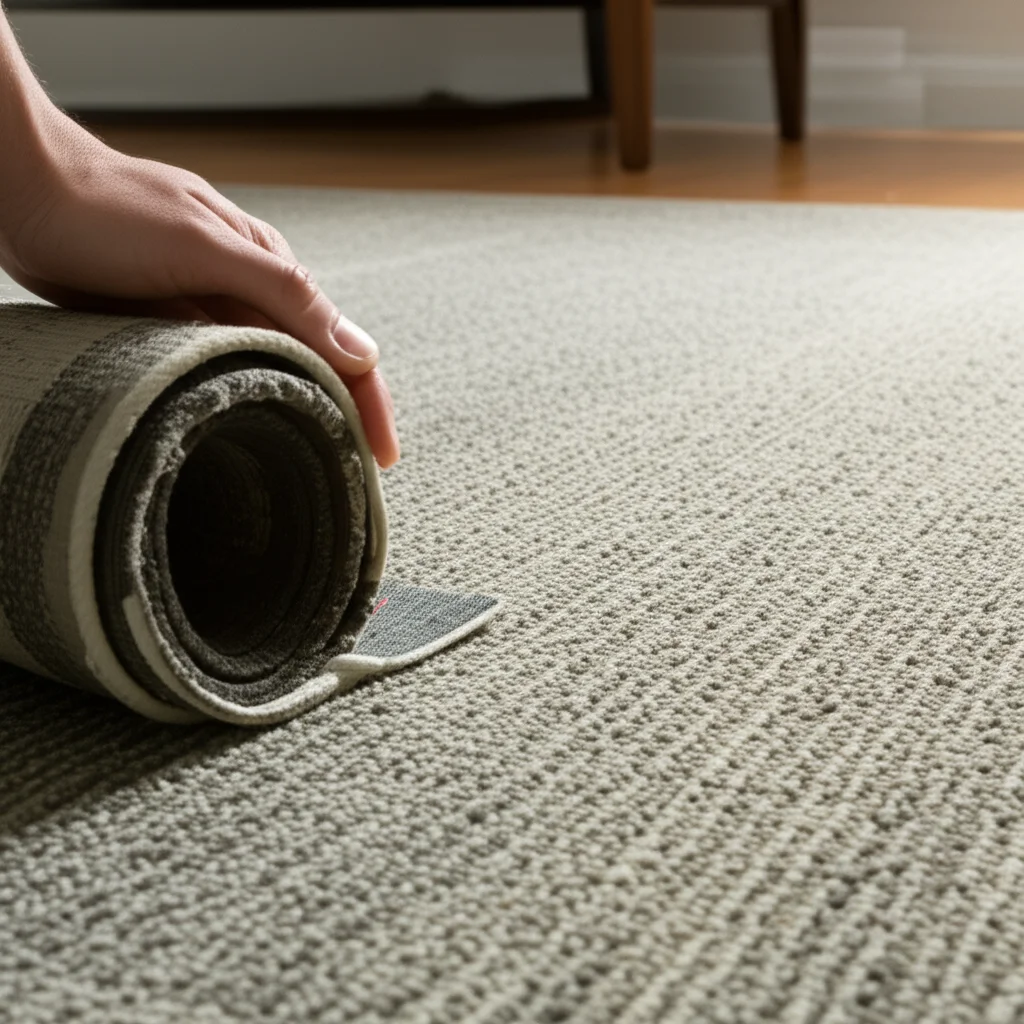· Todd Martin · Home Maintenance · 14 min read
How To Adjust Murphy Bed Piston

Adjusting Your Murphy Bed Piston: A Step-by-Step Guide
Do you love the space-saving convenience of your Murphy bed? Many people do. A Murphy bed offers a smart solution for smaller living areas or guest rooms. It folds neatly into a cabinet or wall unit when not in use. This frees up valuable floor space. However, a Murphy bed relies on a special mechanism to lift and lower the mattress safely and smoothly. This mechanism often uses pistons or gas springs.
Over time, these pistons can lose their balance. They might need an adjustment to work correctly again. If your Murphy bed feels too heavy, sags when closed, or slams open, its pistons likely need attention. Learning how to adjust Murphy bed piston systems is a valuable skill. It keeps your bed working well and extends its life. This article gives you a complete guide. We will cover how Murphy bed pistons work, how to spot problems, and step-by-step adjustment instructions. We also discuss important safety measures and simple maintenance tips. You can get your wall bed back to smooth operation.
Takeaway
- Always prioritize safety.
- Identify your bed’s piston type.
- Understand the signs of imbalance.
- Make small, controlled adjustments.
- Test the bed’s movement after each change.
To adjust a Murphy bed piston, find the adjustment points on the piston or lift mechanism. Turn the screw or bolt to increase or decrease tension or gas pressure. This balances the bed’s weight, allowing it to lift and lower smoothly. Always follow manufacturer guidelines and work safely.
Understanding Your Murphy Bed’s Lift System
A Murphy bed’s main purpose is to fold away. It uses a special lift system to do this. This system supports the mattress and frame as they move. Most modern Murphy beds use gas pistons or coil springs. These parts store energy to help lift the bed. They also control its descent.
Gas pistons are sealed cylinders. They contain compressed gas and oil. When the bed moves, the gas pressure changes. This helps the bed move smoothly up and down. These pistons offer quiet and controlled movement. They are common in many current designs. Spring systems use large coil springs. These springs stretch and compress to provide lift. They can be very durable. Both systems aim to counteract the bed’s weight. This makes it feel almost weightless during operation.
Knowing your system type is key. Gas pistons usually have a smooth, cylindrical body. They may have an adjustment valve or screw. Spring systems often show visible coil springs at the sides or base. These springs connect to various tension points. Understanding these components helps you diagnose issues. It also guides you in proper adjustment. A well-balanced system prevents strain on the bed’s frame. It ensures safe and easy use. Learning about your Murphy bed’s components helps you maintain its function. If you are building a Murphy bed, understanding these parts is even more important for correct assembly. You can learn more about this by reading our guide on how to build a Murphy bed with desk.
Signs Your Murphy Bed Needs Piston Adjustment
Your Murphy bed works hard. It carries the weight of a mattress and frame daily. Over time, the pistons or springs might lose their strength. They may also go out of balance. Several clear signs indicate your Murphy bed piston system needs adjustment. Recognizing these signs early helps prevent bigger problems. It ensures your bed remains safe to use.
One common sign is difficulty lifting the bed. If it feels too heavy, the pistons may not provide enough lift. This means the tension is too low. You might struggle to push it up into the wall unit. Conversely, the bed might spring up too quickly. It could even crash against the frame when you try to close it. This suggests the pistons are too strong. They have too much tension. The bed is over-assisted. Another sign is a sagging bed. When closed, the bed might not sit flush within its cabinet. It might hang slightly downward. This shows a loss of piston strength. The system cannot hold the bed securely in its upright position.
Noises also point to problems. Squeaking, grinding, or popping sounds during movement are not normal. These noises can mean the pistons are dry, worn, or misaligned. An unbalanced bed can also be unsafe. It could drop unexpectedly. It might also be hard to control when lowering. Addressing these issues quickly keeps your Murphy bed safe and functional. Pay attention to how your bed moves. These observations help you decide if an adjustment is necessary.
Safety First: Essential Precautions Before Adjustment
Working with a Murphy bed’s lift mechanism needs careful attention. The pistons or springs are under great pressure. They can cause injury if handled improperly. Before you begin any adjustment, safety must be your top concern. Taking the right precautions protects you and your bed. Never skip these critical steps.
First, always have a helper present. A second person can stabilize the bed. They can also offer assistance if something unexpected happens. This is especially important when you are lifting or lowering the bed during adjustments. Next, clear the area around the bed. Remove any furniture, rugs, or objects that could obstruct movement. You need plenty of space to work safely. Ensure good lighting so you can clearly see the components.
Support the bed properly before making any changes. Use sturdy wooden blocks or props to hold the bed in a stable, partially open position. This prevents the bed from accidentally closing or opening while you work. Never rely solely on the pistons to hold the bed. Always wear safety glasses to protect your eyes from debris or sudden movements. Wear gloves to protect your hands. Consult your bed’s owner’s manual for specific safety warnings. Each Murphy bed model may have unique requirements. Following these safety steps reduces risks. It ensures your adjustment process is safe and controlled.
Identifying Your Murphy Bed’s Adjustment Points
Before you adjust anything, you must locate the specific adjustment points on your Murphy bed. These points vary based on the type of lift mechanism your bed uses. Most modern Murphy beds use either gas pistons or spring systems. Each system has different ways to adjust its tension or pressure. Knowing where to look saves time and prevents frustration.
If your Murphy bed uses gas pistons, look for a small valve or screw. This is usually at the end of the piston rod or cylinder body. Some designs feature a hex head screw. Others use a valve requiring a special tool or an Allen wrench. These adjustment points control the gas pressure inside the piston. Turning the screw adds or releases pressure. This changes the lift force. Markings on the piston might indicate “hard” or “soft,” or plus/minus signs. These show the direction of adjustment.
For spring-loaded Murphy beds, the adjustment points are usually found on the frame. Look for bolts or pins that secure the springs. These points allow you to add or remove springs. You might also find a mechanism to increase or decrease spring tension. This is often done by moving a bolt to different holes. Some older models use a winding mechanism to tighten the springs. Always refer to your bed’s manual. The manual provides exact locations and instructions for your specific model. It is the best source for identifying these critical points. Different brands and models have unique designs.
Step-by-Step Guide to Adjust Murphy Bed Pistons
Now that you understand your Murphy bed’s system and have taken safety precautions, you are ready to adjust the pistons. This process requires patience. You will likely make small changes and test the bed’s movement multiple times. Follow these steps carefully for a proper adjustment.
First, gather the necessary tools. You will likely need an Allen wrench set, a socket wrench, or a screwdriver. The exact tools depend on your bed’s piston type. Always check your owner’s manual for the specific tool requirements. Next, ensure the bed is in a safe, propped position. The helper should stand by to assist with stability.
For Gas Piston Systems:
- Locate the Adjustment Valve: Find the small hex screw or valve on the piston. This is usually at the end closest to the bed frame.
- Make Small Adjustments:
- If the bed is too heavy to lift (needs more lift), turn the screw clockwise (or as directed by markings) to increase tension.
- If the bed springs up too quickly (needs less lift), turn the screw counter-clockwise to decrease tension.
- Test the Bed: Make a quarter-turn adjustment on each piston. Gently remove the props and test the bed’s movement. Lift and lower it completely. Pay attention to how it feels. Does it move smoother? Is it still too heavy or too light?
- Repeat as Needed: Put the props back in place. Continue making small, equal adjustments to both pistons. Test the bed after each change. Adjust until the bed feels balanced and moves smoothly. It should stay down when lowered and stay up when closed.
For Spring-Loaded Systems:
- Identify Spring Attachment Points: Locate the bolts or pins that hold the springs in place. These might be on a movable plate or through a series of holes.
- Adjust Spring Tension:
- If the bed is too heavy (needs more lift), move the spring attachment point to increase tension. This might mean moving a bolt to a hole further away from the pivot point or adding more springs if possible.
- If the bed springs up too fast (needs less lift), move the attachment point to decrease tension. This means moving a bolt closer to the pivot point or removing a spring if your system allows.
- Test and Repeat: As with gas pistons, make small, equal changes on both sides of the bed. Test the movement carefully after each adjustment. Repeat until the bed operates smoothly and is well-balanced.
Remember, patience is key. Small, incremental adjustments are better than large, sudden changes. This prevents over-adjustment and ensures the bed operates optimally.
Troubleshooting Common Piston Adjustment Issues
Even with careful adjustment, you might encounter issues. Murphy bed piston problems can be frustrating. However, many common issues have simple solutions. Knowing how to troubleshoot helps you get your bed working right. Do not give up if your first adjustment does not fix everything.
One frequent issue is still feeling too heavy or too light after adjustment. If the bed is still hard to lift, the pistons might be worn out. They might not hold pressure anymore. In this case, adjustment will not help. You will need to replace the pistons. If the bed still springs up too fast, you might have too much tension. Try backing off the adjustment screw a bit more. Make sure you adjust both pistons equally. Unequal adjustments lead to imbalance. The bed might stick or move unevenly. Always adjust both pistons at the same rate.
Sometimes, the bed makes creaking or grinding noises. This usually points to lubrication issues, not piston adjustment problems. The moving parts, like hinges and pivot points, might need lubrication. Use a silicone-based spray lubricant. Avoid oil-based lubricants near wooden parts. If the bed sags when closed, and adjustment does not fix it, the problem could be beyond the pistons. Check the frame for bends or breaks. The mounting hardware might also be loose. Ensure the bed is securely attached to the wall. If you followed all steps and the problem remains, the pistons might be faulty. They may have lost their gas charge or spring tension. At this point, replacement is the best option.
Maintaining Your Murphy Bed Piston System
Proper maintenance keeps your Murphy bed pistons working well for many years. Regular care helps prevent common problems. It also extends the life of your entire bed system. A little attention now saves you from bigger repairs later. Taking care of the pistons is simpler than you might think.
First, keep the pistons clean. Dust and debris can build up on the piston rods. This can affect their smooth operation. Use a soft, dry cloth to wipe down the piston rods regularly. Avoid harsh chemicals. They can damage the seals. If your pistons appear sticky or have residue, you can use a damp cloth with mild soap. Then wipe them dry. You can learn more about this by reading our guide on how to clean piston heads. This simple cleaning keeps the surface smooth for piston movement.
Next, lubricate moving parts. The hinges and pivot points on your Murphy bed frame need occasional lubrication. Use a silicone spray lubricant or a dry film lubricant. Apply a small amount to the pivot points where the frame connects to the cabinet. Do this every six to twelve months. This reduces friction and prevents squeaks. It also eases the load on your pistons. Inspect the mounting hardware regularly. Check all bolts and screws. Make sure they are tight. Loose connections can put extra stress on the lift mechanism. This can cause uneven wear or failure. Never over-tighten, but ensure everything feels secure. Regular maintenance helps your Murphy bed operate smoothly and safely.
Frequently Asked Questions (FAQ)
How often should I adjust my Murphy bed pistons?
You should adjust your Murphy bed pistons as needed. There is no set schedule. Adjust them when you notice a change in the bed’s operation. This includes if the bed becomes hard to lift, slams open, or sags when closed. Regular checks for smooth movement are good practice.
Can I replace Murphy bed pistons myself?
Yes, you can replace Murphy bed pistons yourself. It involves careful removal of the old pistons and installation of new ones. Always buy replacement pistons specifically designed for your bed model. Follow the manufacturer’s instructions for replacement. Ensure you have a helper and use proper support to prevent injury.
What tools do I need for piston adjustment?
The specific tools needed depend on your Murphy bed model. Most adjustments require basic tools like an Allen wrench set, a socket wrench, or a flat-head screwdriver. Always check your bed’s owner’s manual. It will list the exact tools required for your particular piston type and adjustment method.
Why is my Murphy bed so hard to lift?
Your Murphy bed is hard to lift if the pistons are too weak or worn. They may not be providing enough assistance. This can happen over time as gas pressure decreases or springs lose tension. Adjusting the pistons to increase their force may help. If not, you likely need new replacement pistons.
Are all Murphy bed pistons adjustable?
Most modern Murphy bed pistons are adjustable to some degree. Gas pistons usually have a valve or screw for fine-tuning pressure. Spring-loaded systems often allow for spring addition, removal, or tension changes. Some very old or simple models might not have adjustable pistons. Always check your owner’s manual for details on your specific model.
Can I over-adjust my Murphy bed pistons?
Yes, you can over-adjust your Murphy bed pistons. Over-tightening gas pistons can make the bed spring up too quickly or difficult to lower. Over-tensioning springs can cause similar issues. Always make small, incremental adjustments. Test the bed’s movement after each change to avoid over-adjustment and ensure balanced operation.
Conclusion
A Murphy bed offers wonderful convenience and space-saving benefits. Proper function relies on its lift system. Learning how to adjust Murphy bed piston systems is a valuable skill. It keeps your bed operating smoothly and safely. We covered understanding the different piston types, recognizing signs of trouble, and following critical safety steps. You now have the knowledge to perform precise adjustments.
Remember to make small, careful changes. Always test the bed’s movement after each adjustment. Patience is key. Regular cleaning and lubrication also help maintain the system. If your pistons are truly worn, adjustment won’t solve the problem, and replacement becomes necessary. With this guide, you can confidently troubleshoot and adjust your Murphy bed’s pistons. This ensures your bed remains a functional and safe part of your home. Keep your Murphy bed in top condition with routine checks and timely adjustments. Your space-saving solution will thank you!





